Tesco is a large British multinational grocery and general merchandise retailer founded in 1919. It has over 6,800 stores across several countries. Porter's Five Forces model was applied to analyze Tesco's competitive environment. Rivalry is high in the grocery industry. Tesco differentiates itself through various store formats and supply chain integration. Supplier bargaining power is mitigated through IT systems and own brand products. Significant capital requirements and brand recognition make entry difficult for new competitors. Loyalty programs and wide product ranges help counter customer bargaining power. Threat of substitutes is addressed by product differentiation and availability.
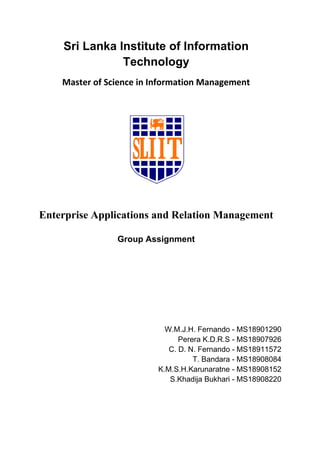




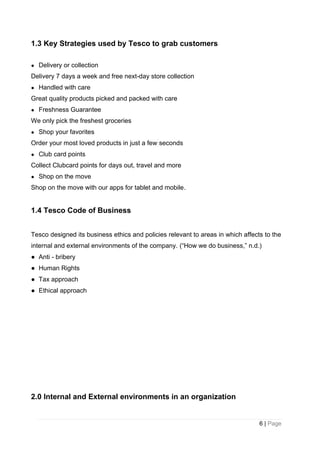




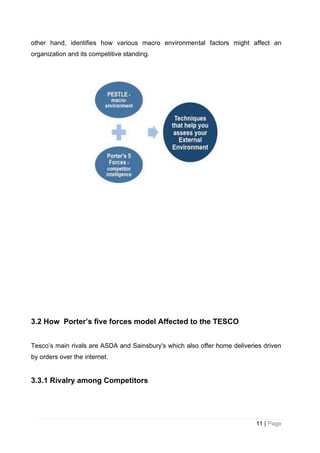


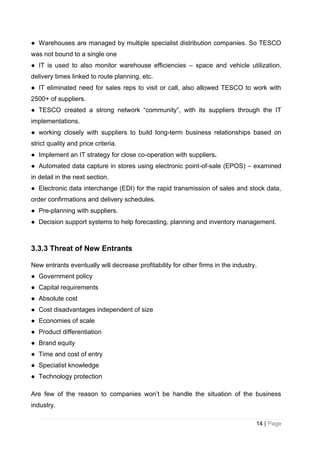



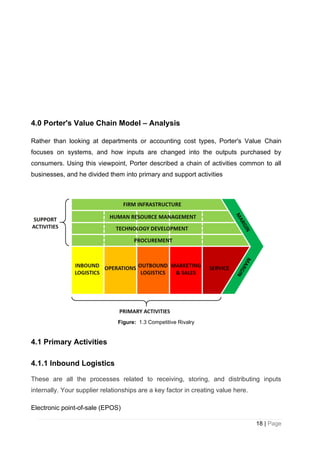
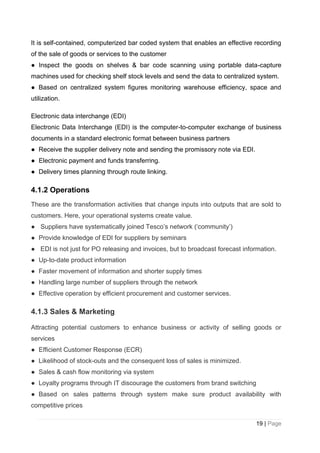


![22 | Page
❖ Core Purpose and Values [WWW Document], n.d. . Tesco Plc. URL
https://www.tescoplc.com/about-us/core-purpose-and-values/ (accessed 10.5.18).
❖ From Competitive Advantage to Corporate Strategy [WWW Document], n.d. URL
https://hbr.org/1987/05/from-competitive-advantage-to-corporate-strategy (accessed 10.5.18).
❖ How we do business [WWW Document], n.d. . Tesco Plc. URL
https://www.tescoplc.com/about-us/how-we-do-business (accessed 10.5.18).
❖ Insights [WWW Document], n.d. . Blue Fountain Media. URL
https://www.bluefountainmedia.com/insights (accessed 10.5.18).
❖ Manjur, R., 2014. Case Study: How Tesco brought loyalty back to its stores [WWW
Document]. Mark. Interact. URL https://www.marketing-interactive.com/case-study-tesco-
brought-loyalty-back-stores/ (accessed 10.5.18).
❖ Tesco, 2018. . Wikipedia.
❖ Mindtools.com. (2018). Porter's Five ForcesUnderstanding Competitive Forces to Maximize
Profitability. [online] Available at: https://www.mindtools.com/pages/article/newTMC_08.htm
[Accessed 2 Oct. 2018].](https://image.slidesharecdn.com/earmfinaldoc-201019033017/85/Tesco-doc-22-320.jpg)